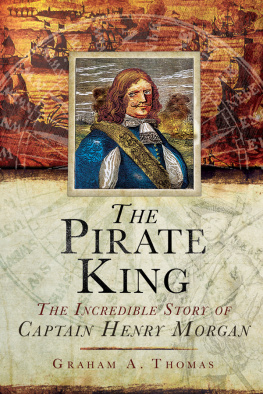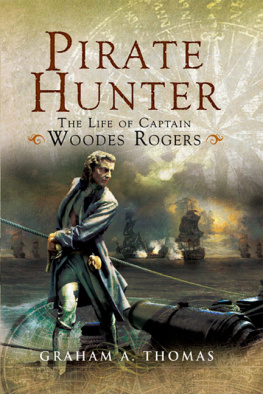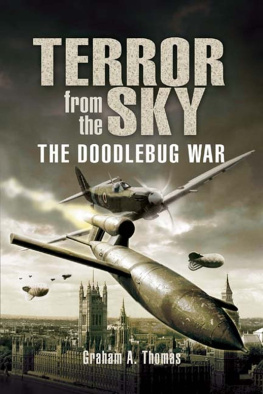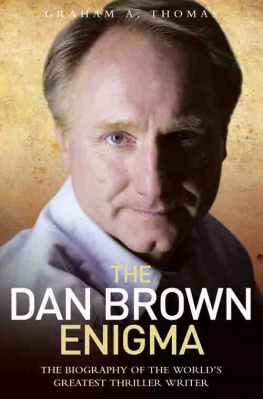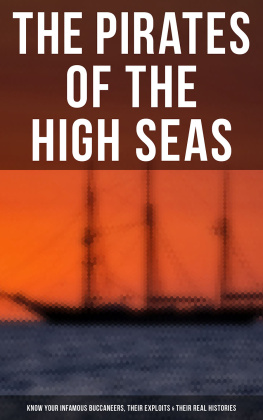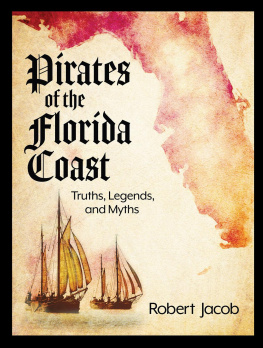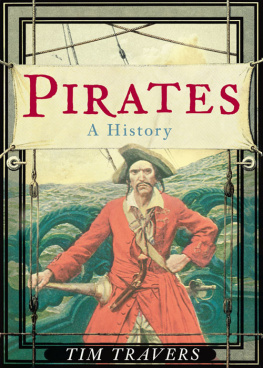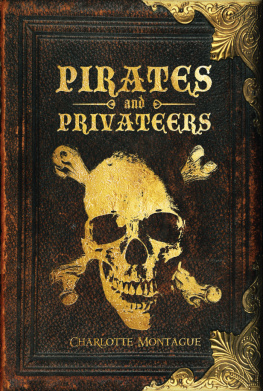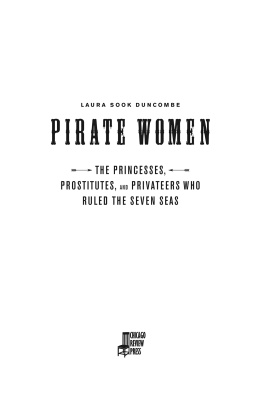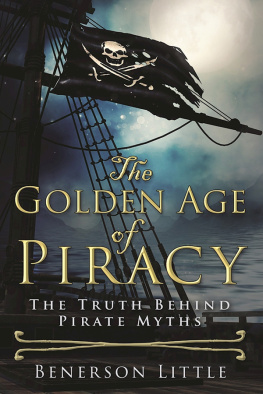This book is dedicated to the all the heroes and adventurers in the world and to those people who strive for the impossible and achieve it.
Copyright 2014 by Graham A. Thomas
First published as The Buccaneer King by Pen & Sword Maritime in 2014
First Skyhorse Publishing edition 2015
All rights reserved. No part of this book may be reproduced in any manner without the express written consent of the publisher, except in the case of brief excerpts in critical reviews or articles. All inquiries should be addressed to Skyhorse Publishing, 307 West 36th Street, 11th Floor, New York, NY 10018.
Skyhorse Publishing books may be purchased in bulk at special discounts for sales promotion, corporate gifts, fund-raising, or educational purposes. Special editions can also be created to specifications. For details, contact the Special Sales Department, Skyhorse Publishing, 307 West 36th Street, 11th Floor, New York, NY 10018 or .
Skyhorse and Skyhorse Publishing are registered trademarks of Skyhorse Publishing, Inc., a Delaware corporation.
Visit our website at www.skyhorsepublishing.com.
10 9 8 7 6 5 4 3 2 1
Library of Congress Cataloging-in-Publication Data is available on file.
Cover design by Jon Wilkinson
Print ISBN: 978-1-63220-512-4
Ebook ISBN: 978-1-63220-877-4
Printed in the United States of America
Contents
List of Plates
. Morgan at Porto Bello.
. Puerto del Prncipe (now Camagey) being sacked in 1668 by Morgan.
. Henry Morgan recruiting for the attack.
. Henry Morgan destroys the Spanish fleet at Lake Maracaibo, Venezuela.
. Map showing Chagres Castle.
. Submerged palms and battery casemates of Old Port Royal.
. A drawing of Port Royal before the earthquake that destroyed it.
. A closer view of the submerged remains of Port Royal.
. San Lorenzo Fort as it is today.
. Kings Square, St Jago de la Vega (Spanish Town), 182024.
. The Golden Vale, Portland Jamaica, circa 182024.
. Harbour Street Kingston Jamaica, circa 182024.
. Bryan Castle, Great House, Trelawny, Jamaica, circa 182024.
. The Bog Walk, circa 182024.
. The Bridge over the White River, St Marys, Jamaica, circa 182024.
. Kingston and Port Royal from Windsor Farm, Jamaica, circa 182024.
. Spring Garden Estate, St Georges, Jamaica, circa 182024.
. Bridge over the Rio Cobre, Spanish Town, Jamaica, circa 182024.
. The Capture of Puerto Bello. This painting is based on an engraving from a panoramic painting by Samuel Scott. In the summer of 1739, during a debate in the House of Commons relating to the deteriorating situation with Spain in the West Indies, Captain Edward Vernon claimed he could take the Spanish town of Puerto Bello, Panama, on the north side of the Isthmus of Darien with six ships of the line. He was taken at his word, promoted to vice admiral and given six ships to redeem his pledge. The war became known as the War of Jenkins Ear.
. Map of Mexico, Florida and the West Indies, by Balthasar Ruyter. This is an extremely rare and unusual map of 1747, showing Mexico, the Caribbean, the West Indies and Florida from roughly Michoacn Mexico, west to Surinam, north as far as modern-day Virginia and south as far as modern-day Ecuador.
Unless otherwise stated, all images are in the public domain. Most were sourced through Wikimedia Commons. Should anyone have information pertaining to their copyright, please contact the publisher.
Acknowledgements
I would like to thank those authors and researchers who have come before me, such as Dudley Pope, Stephen Talty and Terry Breverton, but I would mostly like to thank the people at British History Online, who have placed a huge number of historical documents online for everyone to access. Without them, the vast amount of information in this bookthe letters, the minutes, the reportswould have been much harder to access. They are doing a terrific job!
Preface
W hen I was researching a book about Blackbeard, the pirate, another name kept cropping up that I could not account for. That name was Sir Henry Morgan. Now, these two men didnt live at the same time (Blackbeard came several decades after Morgan) but scholars and researchers tended to either compare them, or when they named Blackbeard as the most famous pirate who ever lived they would add that Morgan was probably the most famous buccaneer who ever lived.
Intrigued, I had to discover for myself just who this Morgan was. Once I started digging I have to admit I was greatly surprised. The achievements of Morgansacking Panama, for examplefar outweighed those of Blackbeard, or even Bartholomew Roberts, who took more than 400 ships during his brief career as king of the pirates.
Morgan was a cut above these two menfar above, in my opinion. Unlike the pirates, Morgan was driven by more than just the lure of gold. He was a patriot, loyal to the King and his country; in particular, Jamaica. He realized that pillage and plunder was the way to not only make his own fortune but to build the wealth and prosperity of the island. He never attacked without a commission or letter of marque from the Jamaican government, and all his exploits were against the Spanish, Englands enemy at the time. He helped to expand Englands influence within the West Indies.
There are many myths that surround Morgan, which some scholars and historians have attempted to dispel. Supposedly, he or his men committed torture and other brutal acts on their Spanish prisoners... or did they? As we look into the life of Henry Morgan, we shall see.
There was an eyewitness to many of Morgans campaignsAlexander O. Esquemeling, who sailed with the buccaneers as a surgeon. Most of the sources of research used for this book call him John Esquemeling, and it is this name that we will use. Knowledge of this man is incomplete although there are many who believe that John Esquemeling was a pseudonym for Hendrik Barentzoon Smeeks, a surgeon who left his hometown of Zwolle in central Holland to serve aboard a merchant ship with the Dutch East India Company. of the campaigns led by Morgan in which he was involved. It is on his account that scholars have since based their work.
But is it accurate? Esquemeling is the one who tells us that torture was used on prisoners in order for the buccaneers to find out where treasure was hidden. However, if, as Dudley Pope tells us in his book about Morgan, Harry Morgans Way , Esquemelings account is exaggerated, then what do we believe?
It is highly likely that the truth lies somewhere in the middle. Every writer embellishes his or her own work in order to excite the reader and sell as many books as possible. The accusation that Esquemeling exaggerated his accounts for this purpose is probably justified to some degree, but the authors who claim he was exaggerating are very likely themselves doing this in order to make their arguments more convincing.
While this book touches upon the allegations that Morgan and/or his men tortured prisoners for profit, it is more concerned with the man himself and the times in which he lived. The times were hard; they were rough and brutal.
Wherever possible we will be using official letters and documents to establish the facts but first and foremost this is a story of daring and courage, of an extraordinary man whose actions were akin to empire building. Like all of us, he was flawed, but England has not seen the likes of him for a long, long time and probably never will again. Thats what makes this tale so compelling.

